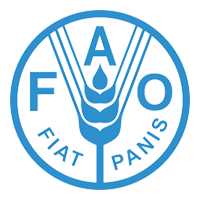Missing the target: Lessons form enabling innovation in South Asia
This paper reflects on the experience of the Research Into Use (RIU) projects in Asia. It reconfirms much of what has been known for many years about the way innovation takes place and finds that many of the shortcomings of RIU in Asia were precisely because lessons from previous research on agricultural innovation were “not put into use” in the programme’s implementation. However, the experience provides three important lessons for donors and governments to make use of agricultural research: (i) Promoting research into use requires enabling innovation. This goes beyond fostering collaboration, and includes a range of other innovation management tasks (ii) The starting point for making use of research need not necessarily be the promising research products and quite often identifying the promising innovation trajectories is more rewarding (iii) Strengthening the innovation enabling environment of policies and institutions is critical if research use is to lead to long-term and large-scale impacts. It is in respect of this third point that RIU Asia missed its target, as it failed to make explicit efforts to address policy and institutional change, despite its innovation systems rhetoric. This severely restricted its ability to achieve wide-scale social and economic impact that was the original rationale for the programme.
Related Resources
Improving Policymaking for Agricultural and Rural Development in Africa: The role of ICTs and Knowledge Management
This paper investigates the role of knowledge management in African agricultural and rural development policies, and how information and communications technologies (ICTs) can contribute to enhance it. African Policymakers are aware of the importance of knowledge management; however, its actual...
The when and where of research in agricultural innovation trajectories: Evidence and implications from RIU's South Asia projects
The question of how agricultural research can best be used for developmental purposes is a topic of some debate in developmental circles. The idea that this is simply a question of better transfer of ideas from research to farmers has...
ICTs and Empowerment of Indian Rural Women
What can we learn from ongoing initiatives? There has been a lot of interest during the last two decades in employing Information and Communication Technologies (ICTs) for achieving development. While many of these initiatives have benefited rural women by way...
Learning to evaluate capacity development and collaborative learning about community-based natural resource management: lessons from Asia
This paper, part of the Social Sciences Working Paper Series, presents studies undertaken by nine community-based, natural resource management (CBNRM)-oriented organizations in China, Viet Nam, the Philippines and Mongolia. The partner organizations, representing three broad types: academic, regional network, and...

Research into use: Investigating the relationship between agricultural research and innovation
This paper sets out an analytical framework for doing research on the question of how to use agricultural research for innovation and impact. Its focus is the Research Into Use (RIU) Programme sponsored by the UK’s Department for International Development...


